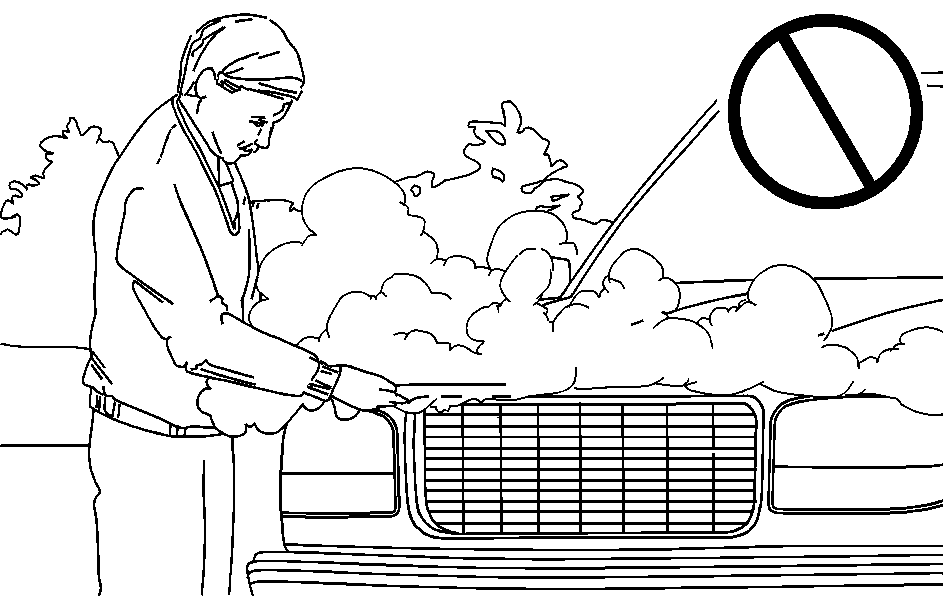You will find a coolant temperature gage on your vehicle's instrument panel. See Engine Coolant Temperature Gage . In addition, you will find an ENGINE COOLANT HOT, ENGINE OVERHEATED and a REDUCED ENGINE POWER message in the DIC on the instrument panel. See DIC Warnings and Messages .
Overheated Engine Protection Operating Mode
If an overheated engine condition exists and the REDUCED ENGINE POWER message is displayed, an overheat protection mode which alternates firing groups of cylinders helps prevent engine damage. In this mode, you will notice a loss in power and engine performance. This operating mode allows your vehicle to be driven to a safe place in an emergency. Driving extended miles (km) and/or towing a trailer in the overheat protection mode should be avoided.
Notice: After driving in the overheated engine protection operating mode, to avoid engine damage, allow the engine to cool before attempting any repair. The engine oil will be severely degraded. Repair the cause of coolant loss, change the oil and reset the oil life system. See Engine Oil .
If Steam Is Coming From Your Engine

Caution: Steam from an overheated engine can burn you badly, even if you just open the hood. Stay away from the engine if you see or hear steam coming from it. Just turn it off and get everyone away from the vehicle until it cools down. Wait until there is no sign of steam or coolant before you open the hood.
If you keep driving when your engine is overheated, the liquids in it can catch fire. You or others could be badly burned. Stop your engine if it overheats, and get out of the vehicle until the engine is cool. See "Overheated Engine Protection Operating Mode" under Engine Overheating for information on driving to a safe place in an emergency.Notice: If your engine catches fire because you keep driving with no coolant, your vehicle can be badly damaged. The costly repairs would not be covered by your warranty. See "Overheated Engine Protection Operating Mode" under Engine Overheating for information on driving to a safe place in an emergency.
If No Steam Is Coming From Your Engine
An overheat warning, along with a low coolant condition, can indicate a serious problem.
If you get an engine overheat warning but see or hear no steam, the problem may not be too serious. Sometimes the engine can get a little too hot when you:
| • | Climb a long hill on a hot day. |
| • | Stop after high-speed driving. |
| • | Idle for long periods in traffic. |
| • | Tow a trailer. See Towing a Trailer . |
If you get the overheat warning with no sign of steam, try this for a minute or so:
- Turn on your heater to full hot at the highest fan speed and open the window as necessary.
- If you're in a traffic jam, shift to NEUTRAL (N); otherwise, shift to the highest gear while driving - DRIVE (D).
If you no longer have the overheat warning, you can drive. Just to be safe, drive slower for about 10 minutes. If the warning doesn't come back on, you can drive normally.
If the warning continues, pull over, stop, and park your vehicle right away.
If there's still no sign of steam, push down the accelerator until the engine speed is about twice as fast as normal idle speed for at least three minutes while you're parked. If you still have the warning, turn off the engine and get everyone out of the vehicle until it cools down. Also, see "Overheated Engine Protection Operating Mode" listed previously in this section.
You may decide not to lift the hood but to get service help right away.
